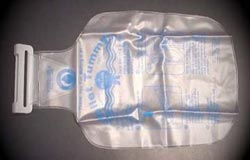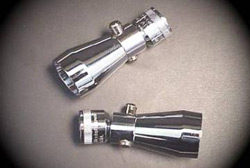Water Conservation
Use these tips and tools to maximize water efficiency and conservation in your home and workplace.
-
Water Conservation Quick Tips
- Verify your home is leak free: read your water meter before and after a one-hour period when no water is being used. If the meter does not read exactly the same, there is a leak somewhere
- Repair leaky faucets and pipes
- Check toilet tanks: add a few drops of food coloring into the tank. If the toilet is leaking, color will appear in the water in the bowl within 30 minutes
- Install a displacement device in the toilet tank. This will cut down on the amount of water needed per flush
- Operate the dishwasher and washing machine only when you have a full load
- Connect a shut-off nozzle to your hose
- Use a broom and dustpan instead of a hose to clean debris off the patio, sidewalk, and driveway
- Calculate how much water you use
- Become an involved citizen: report all significant water losses (broken pipes, errant sprinklers, open hydrants)
-
Water Saving Devices for Your Home
There are many devices that can be installed in your home to reduce the amount of water that is used. Some of them can be installed by homeowners and others need professional installation. Toilets are one of the greatest water users in the home. Low-flow toilets use 1.6 gallons per flush and can reduce water use by 23 - 46 percent, compared to conventional models that use 3.5 to 5 gallons per flush.
If you are replacing an appliance in your home, be sure to research all available techniques and choose the right one for your home. Visit your local home improvement store to purchase any of the easy-to-install devices listed below.
Note: UF/IFAS supports the use of water-saving devices in the home. However, we do not endorse any particular brand, company, or device.
Toilet-tank displacement device / toilet dam

The height of the water in the toilet tank is what causes the bowl to flush. Adding a displacement device (bag or plastic bottle) or a toilet-tank dam will reduce the amount of water used per flush. This technique works best for older toilet models. Be sure the displacement device does not interfere with the operation of the tank. A toilet-tank displacement device can cut water use by 40 percent.
Faucet aerators

Faucet aerators can reduce faucet water use by 50 percent. These devices deliver a strong spray, but help to control water consumption. They can be installed by homeowners in all faucets and showerheads to increase spray velocity. Faucet aerators can reduce faucet water use by 50 percent.
Low-flow showerheads

Shower water use can be reduced 50 percent with a low-flow showerhead. These work by mixing air into the water flow (like an aerator), which is restricted to increase the water pressure. For the best efficiency, choose a low-flow showerhead with a shut-off valve. This allows you to turn off the water while soaping up and turn it back on instantly without readjusting the temperature. Shower water use can be reduced 50 percent with a low-flow showerhead, and can save up to 20,000 gallons of water per year!
Hot water re-circulation pump
This system provides hot water almost immediately. It circulates ambient temperature water in the hot water pipes back to the water heater. No extra plumbing is required and it is designed to use with any hot water system.



